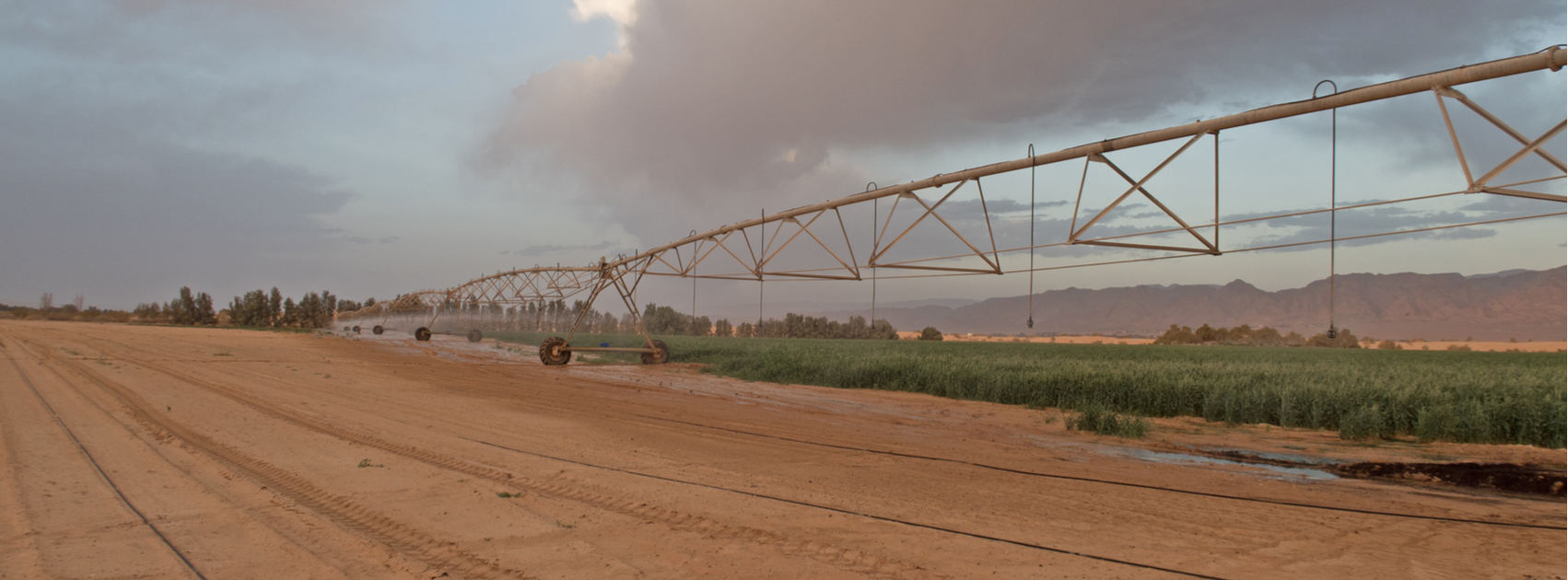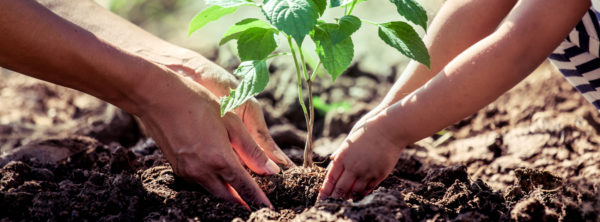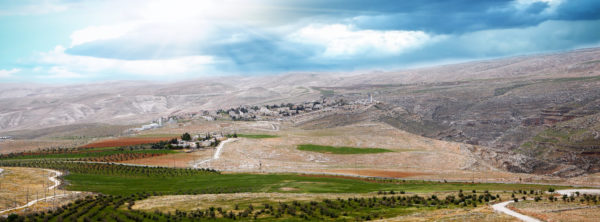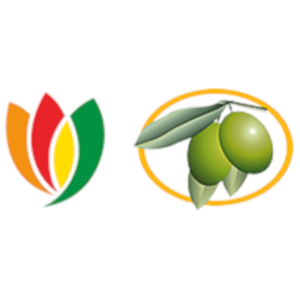Even before the establishment of Israel’s statehood, the dry and barren land motivated the returning pioneers to develop revolutionary ways of conserving and distributing water to survive.
Israel started large-scale planning for efficient and reliable water distribution prior to its official independence in 1948, through the National Water Carrier project. The project remains the largest water system in Israel to date. In the 1950s, David Ben-Gurion backed the plan of the water infrastructure, and it was completed in 1964.
The system is a series of giant pipes, open canals, tunnels, reservoirs, and large pumping stations that transfer fresh water from the Sea of Galilee down an 80-mile path. The path splits in two near Rosh Ha’ayin, and one pipe goes to the Negev Desert while the other to the Jerusalem area.[i]
As efficient as this system is, there is only so much water that can be pulled from the Sea of Galilee. There are reports of the fresh body of water decreasing in size. This puts Israel back to work researching and developing new and improved methods for water conservation.
How does Israel respond to the water crisis?
Israel responds to limited water supply with technology such as:
These 3 techs go farther because Israel has a different mind-set when it comes to conserving and using resources.
1. Israel and drip irrigation
Drip irrigation is considered the discovery that changed the face of agriculture. Discovered in the 1930s, drip irrigation has shown to save water and provide essential nutrients to the crops by slowly dripping water that goes to the roots.
The process uses every usable drop of water available and sends it directly to the plant—stretching the liquid commodity as far as possible—for the good of the people and the earth.
How drip irrigation helps the world
Farmers all over the globe have adopted this way of farming, especially those who live in deserts and arid climates.
California: California tomato farmers found that drip irrigation saved their crops during recent droughts. In 2015, the governor of California issued a statewide water use reduction decree:
“With emergency drought conditions persisting throughout California, the State Water Resources Control Board adopted an emergency regulation requiring an immediate 25 percent reduction in overall potable urban water use statewide…” [ii]
During the 2015 drought, farmers in the United States were looking for innovative ways to conserve water. Drip irrigation became the answer. Some farmers used 35% less water compared to those with surface or sprinkler irrigation. One farmer reported getting “70% more tomatoes per 1,000 gallons of water,” according to an article published in The New York Times.[iii]
California farmers are also looking at drip irrigation for other crops, such as almonds and other nut trees. Because the United States depends on California’s nut production (more than 90% of walnuts, pistachios, and almonds used in the U.S. come from California), it’s crucial for the economy on a large scale, and farmers on the smaller scale, to practice efficient water management.
Mexico. Recently, Mexicham, a pipe and petrochemical company out of Mexico, joined Netafim, an Israeli manufacturer of irrigation equipment. Other nations have taken notice of Israeli’s water tech and are joining efforts to expand its impact to the rest of the world.
2. Israel and desalination
As water continues to be a commodity, and with fresh water on the decline, Israel once again has shot to the top of cutting-edge tech to squeeze every possible drop it can from the natural resource. Israel has quickly become known for pioneering desalination processes.
Desalination removes salt and minerals from seawater, making it drinkable. Though the first desalination plant was built in the 1960s in Israel, it wasn’t until 1999 that it was accepted as a way to produce clean, fresh water.
Until recently, desalination was also considered expensive and inefficient. However, through Israel’s perseverance and determination during the water crisis, new technologies were developed, and costs have decreased.
One desalination company in Israel, Sorek, can produce one thousand liters of drinkable water for $0.58. The International Desalination Association reports that 300 million people are provided drinkable water through the desalination process.
How desalination helps the world
California. The United States reappears on the scene again as a beneficiary of the Israeli-developed process. IDE Technologies (an Israeli desalination company) has built a desalination plant in Southern California that is modeled after Israel’s facilities.
The world. There are plans to build six similar facilities around the globe. Once again, Israel shares her blessings with the world.
According to IDE Technologies, more than 60% of Israel’s domestic water comes from desalination. No other country comes close to this achievement. How should the world respond? With gratefulness. From Israel’s need, they developed a solution, and we have benefited.
You can think of it this way… since Israel gained independence, the country has multiplied water resources and agricultural production. Start-ups have thrived, boosting the economy—and all of this has benefited other nations in countless ways.
Find out why Israel’s economy is booming HERE!
As the nation continues to grow and thrive, we must stand beside it in solidarity. Not just because it is beneficial, but because through such partnership, there is the potential for global transformation.
3. Israel and water recycling
Believe it or not, Israel recycles 90% of its wastewater—the highest percentage in the world. This technology can be costly but having water accessible during droughts and dry seasons is critical to Israel’s agricultural success because it keeps production steady, as well as reliable.
The recycled water, although purified enough for consumption, is primarily used for agricultural irrigation.
How water recycling helps the world
The United States. In 2016, the U.S. Chamber of Commerce’s executive vice president, Myron Brilliant, strongly urged the U.S. to work jointly with Israel on water management issues. He made this statement about the projected issue of water use in the United States:
“…without any significant change in how we manage water, demand will exceed supply by 40 percent by 2030 and the cost to close this gap could be as much as $60 billion a year for the next 20 years… if left unresolved, costs stemming from water mismanagement could be seen in both our weekly grocery bill and the landscape of global geopolitics.” [iv]
The world. Reusing wastewater, especially for drinking, is not the most common or popular way to conserve water, even though it’s proven to be safe and clean after purification. In spite of the method’s unpopularity, countries such as Singapore, Australia, Namibia, and a few states in the U.S.—California, Virginia, and New Mexico—have taken the plunge and adopted this practice.
A different mind-set
It goes without saying, Israel holds the secret to sustaining life through water. Out of difficult circumstances and no options, they have been able to have a surplus of water. But they aren’t wasting the excess—they continue to be good stewards of the resource, and share it with the world.
Think about the impact we can have on the globe if we collaborate and learn from Israel’s years of resourcefulness, ingenuity, and imagination.
The time has come for us to respond to conservation efforts and Israel. We can all take one single step to make a global difference.
Go HERE to find out more!
[i] https://www.jpost.com/Israel/Inside-the-National-Water-Carrier
[ii] https://water.ca.gov/-/media/DWR-Website/Web-Pages/Water-Basics/Drought/Files/Resources/Californias-Emergency-Drought-Declaration-is-lifted.pdf
[iii] https://www.nytimes.com/2015/08/16/opinion/sunday/how-california-is-winning-the-drought.html
[iv] https://www.reviewjournal.com/opinion/nevada-and-israel-together-can-shape-the-future-of-water/







